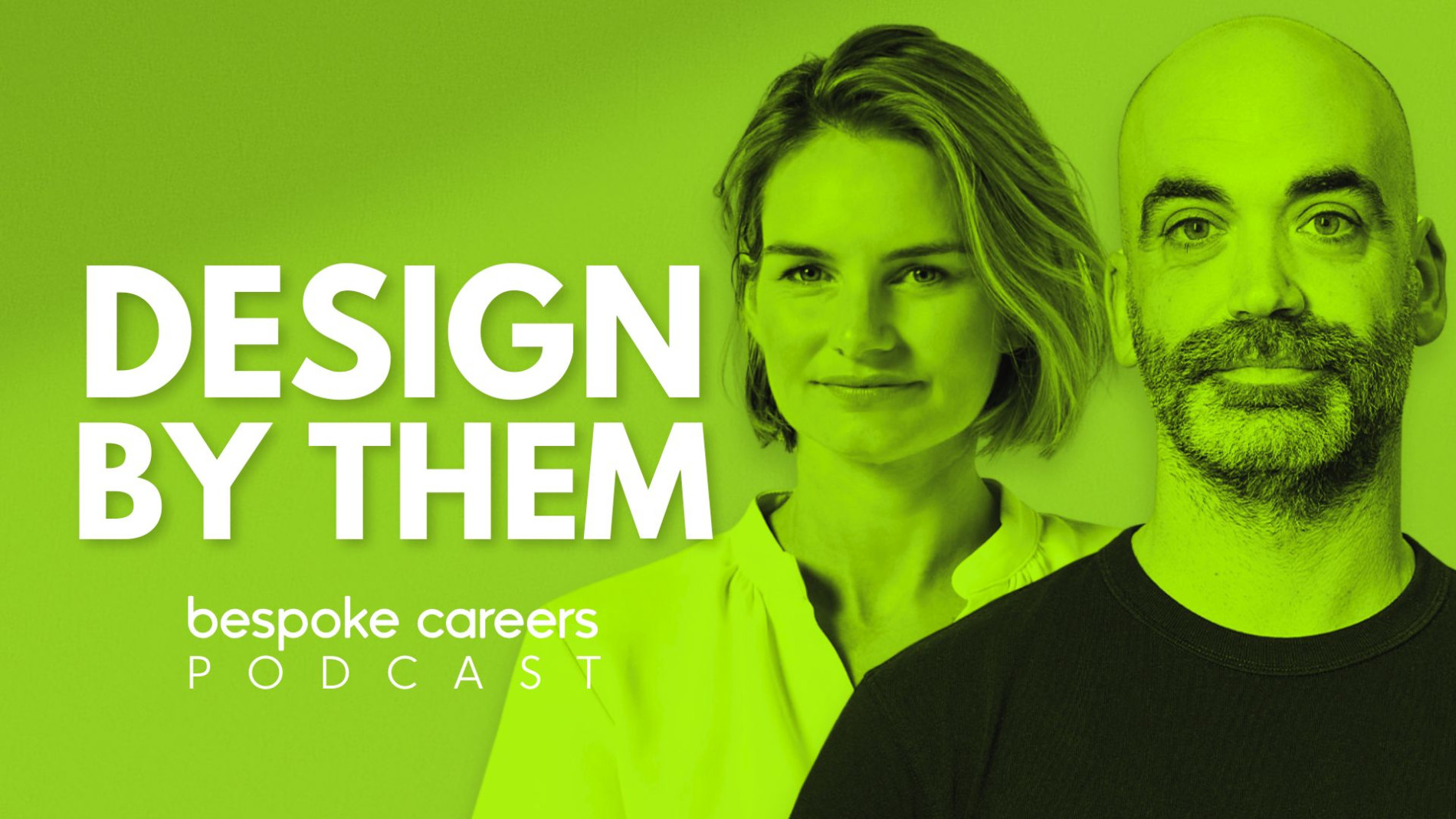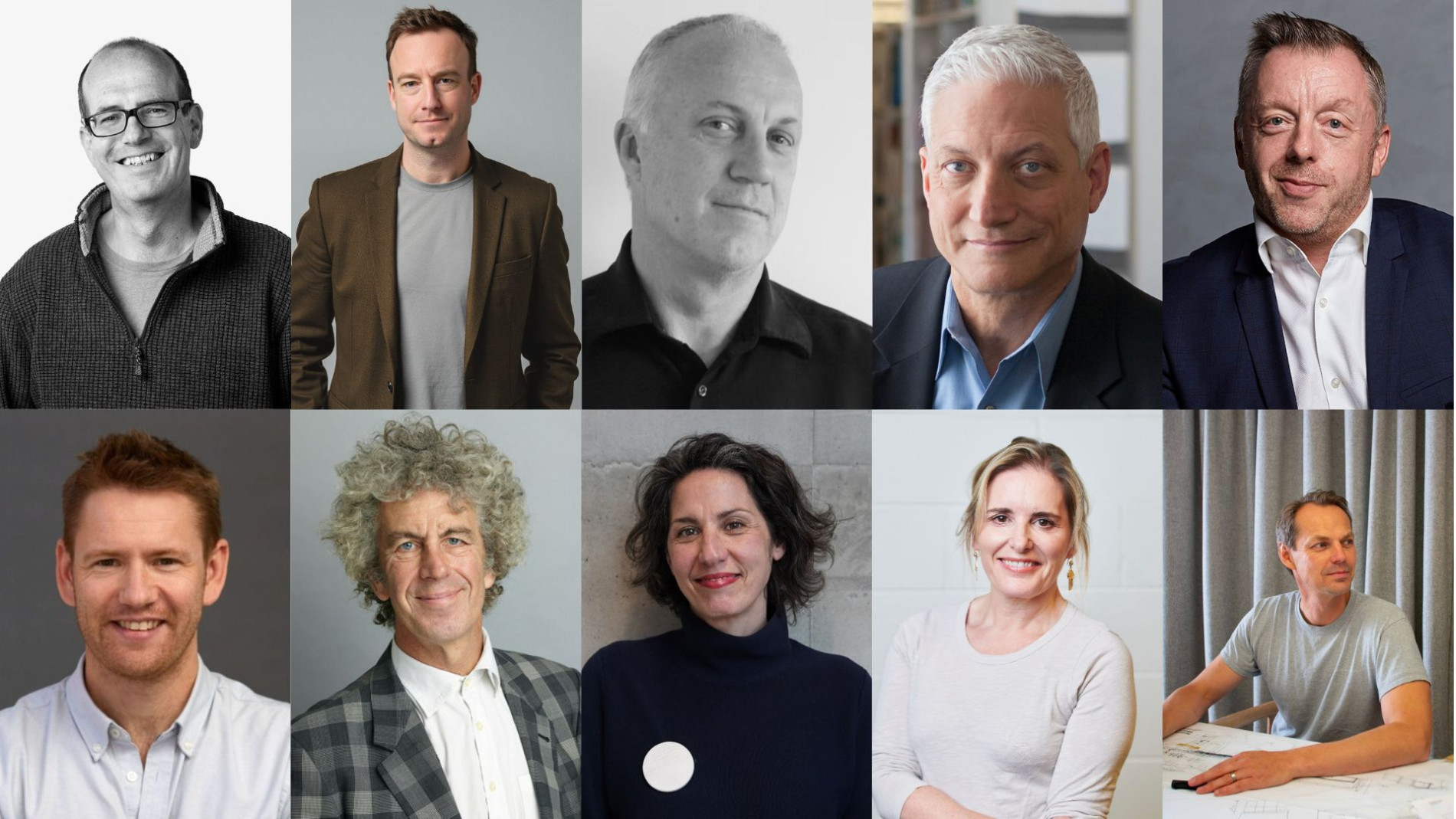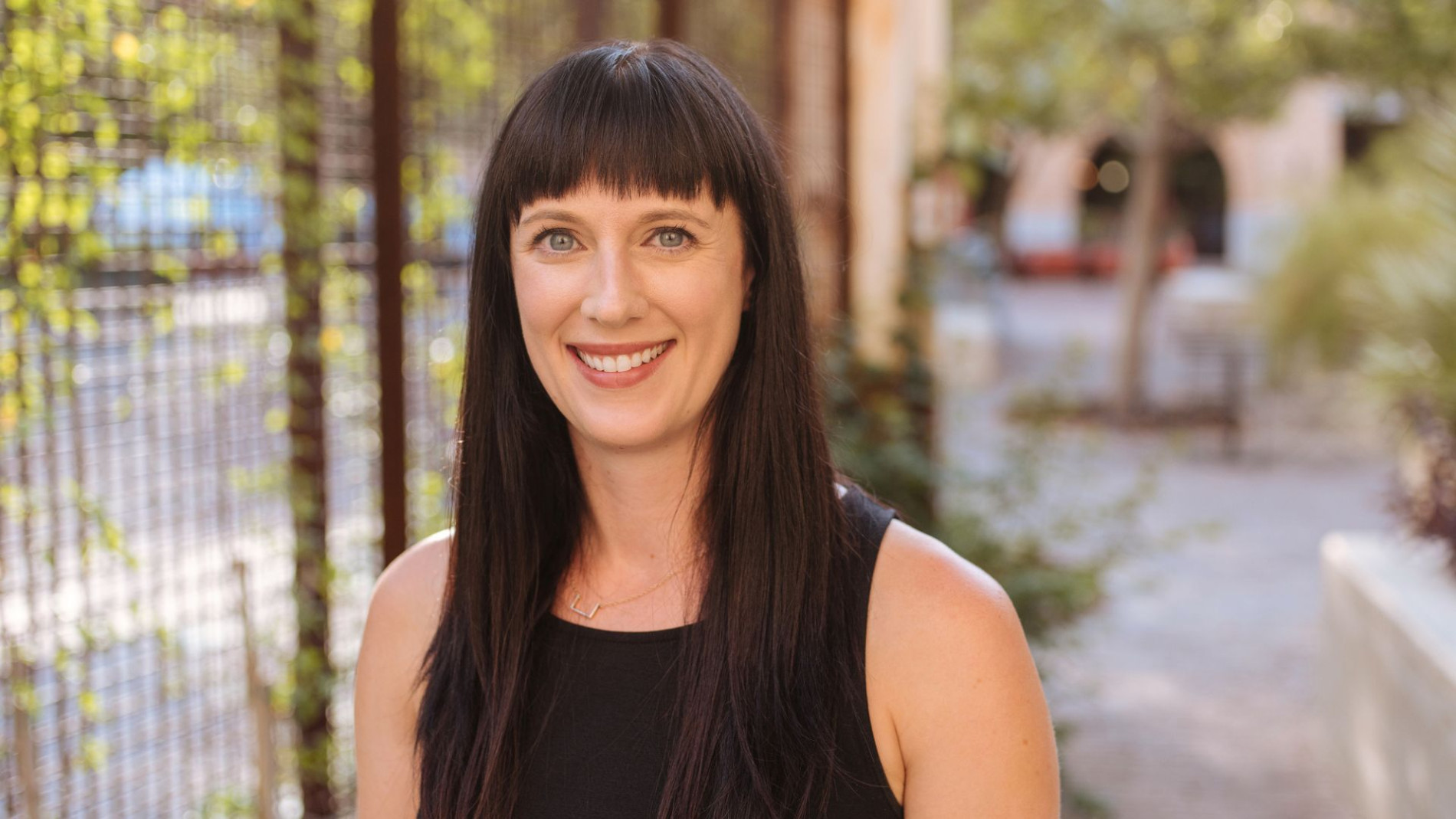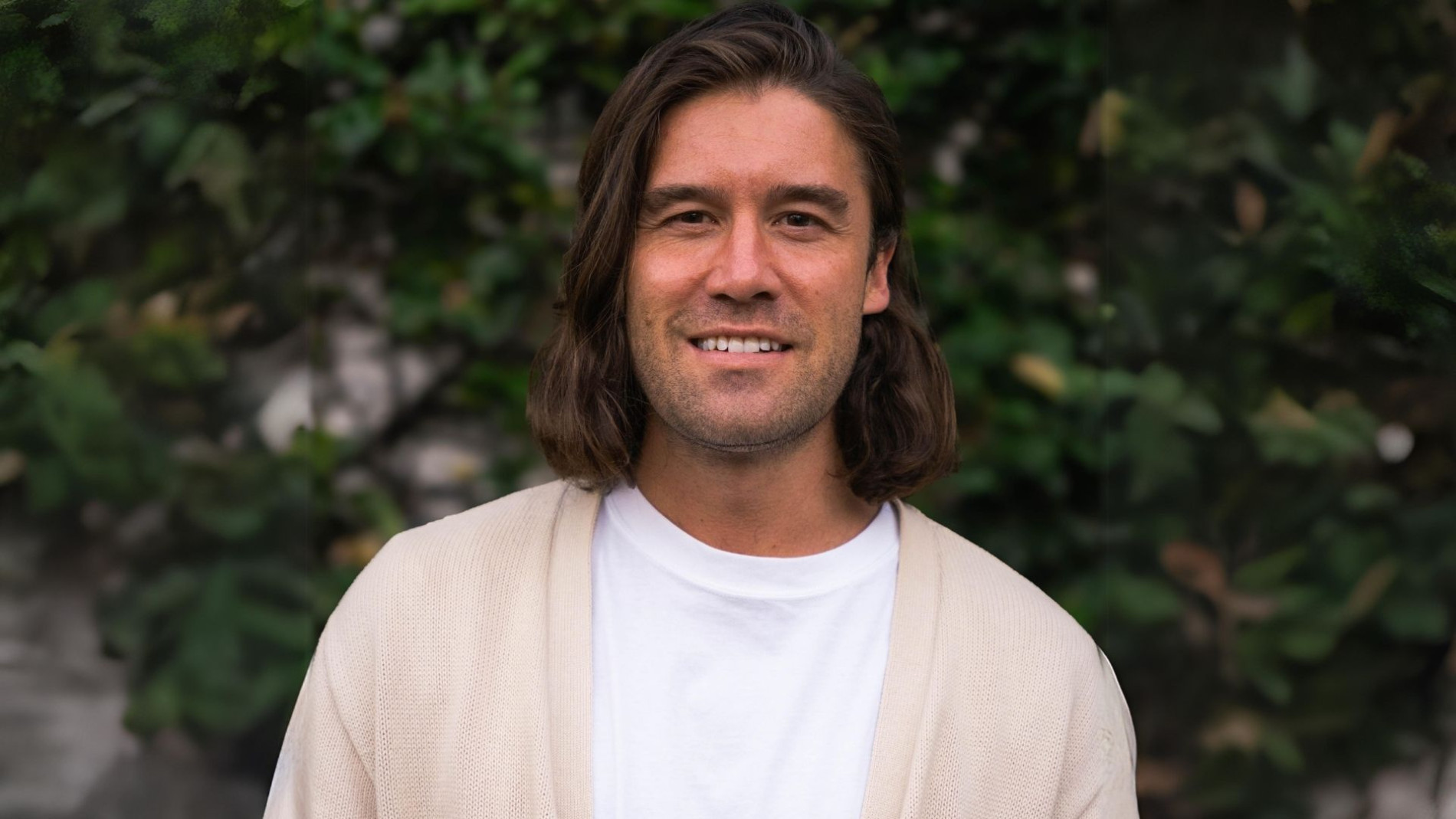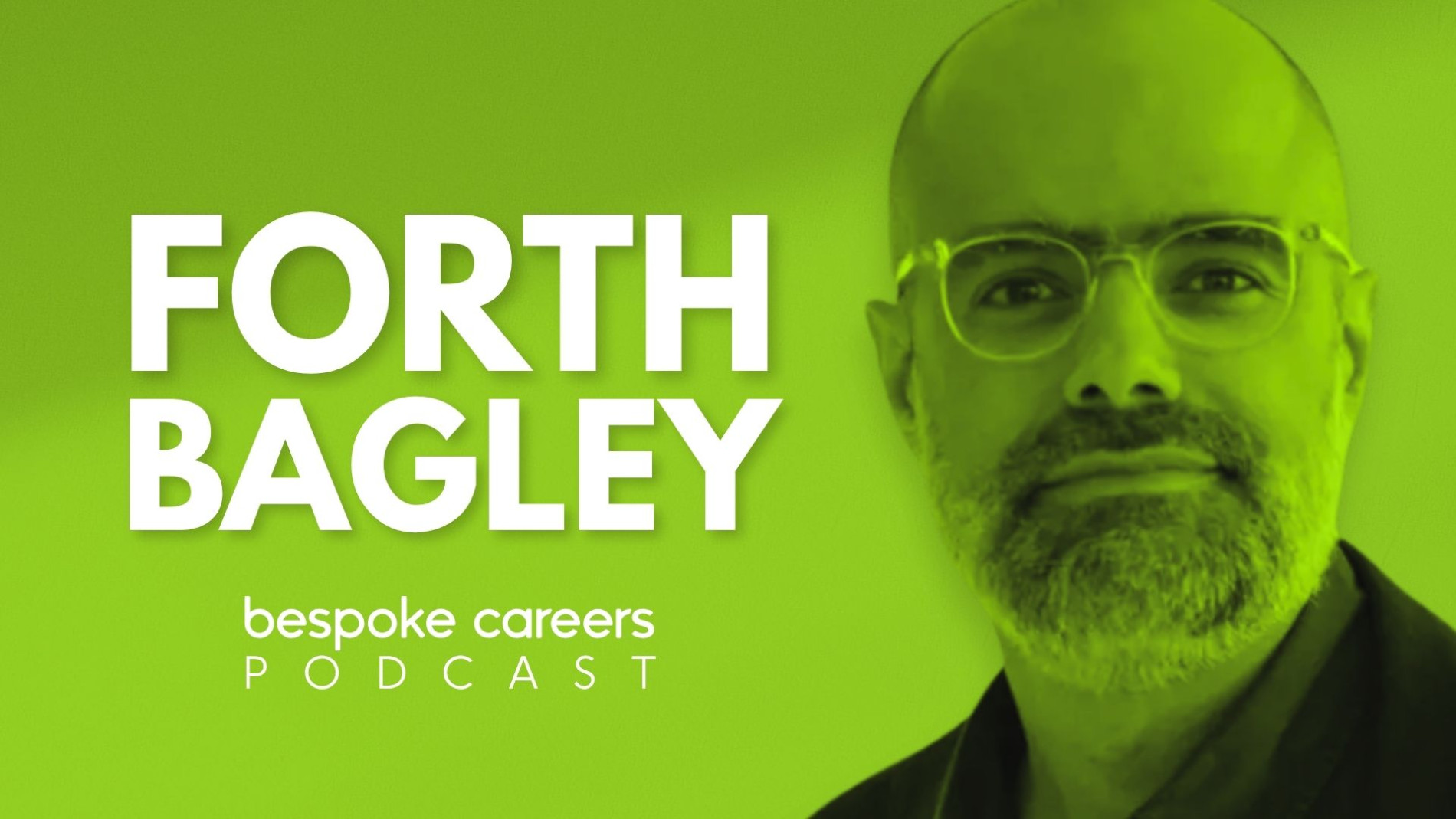
Forth Bagley on big projects, delayed gratification, and becoming the architect you want to be
From studying at Yale to leading global megaprojects like Changi Airport and Hudson Yards, Forth shares what’s changed in the profession, why architecture is a service business, and how to lead without losing the joy in design.
Why architecture?
It’s the same answer that propelled me into the profession to begin with, which is just the desire to have an impact on cities, on neighbourhoods, on making positive contributions to people’s lives. At a firm like KPF, where the impact is broad and global, you wake up every morning and try to do that.
On his route into architecture…
I don’t come from a family of architects or a family of artists. My mum was a banker, my dad was in the commodities business. I grew up in England and because of my dad’s job we were travelling a lot. He was in the sugar business, so we’d go to the Philippines, Hong Kong, parts of the Caribbean, all over the world. Through his job, I got to travel, got to see a lot of cities, go through a lot of airports, stay in a lot of hotels, and just got the building bug from that. Luckily, I had parents who were supportive of it and schooling that supported creativity, and was eventually able to parlay that into a career.
My dad would take me to meetings and client dinners, I was part of it. It allowed me to have a comfort in boardrooms, which I think a lot of architects don’t get that training. For a company like KPF, to be able to walk into a boardroom, be comfortable giving a presentation, going out to dinner, feeling comfortable around all sorts of people, geographically and economically, socially, culturally, you have to be sensitive to the world around you as an architect. I think particularly as an architect engaged in mixed-use large projects, with lots of corporate clients, you have to have that level of comfort.
On studying at Yale…
I went to Yale undergrad as well as grad, so I left London and moved to the United States to go to university. That first four years at Yale was a liberal arts education. I didn’t do architectural design; I stumbled into architectural theory and history as a degree. I was one of four people at Yale who graduated with that degree. I wrote my thesis on airports, so it was in retrospect a very loose education. It allowed me to explore what was of interest to me.
That was a very different experience to my graduate experience at Yale, which was very pragmatic. It’s not an accident that Richard Rogers and Norman Foster came out of that school – it was very focused on building. Every second year at architecture school, everyone builds a house. So I went from doing architectural history theory, writing about airports, to doing real building-focused education.
After September 11th, there was a weird commercial real estate recession, and Bob Stern, the dean, said, “Why don’t you just stay, go all the way through, become a real architect?” I was lucky because he was very involved, even with undergrad students. I was able to switch from this loose education to a pragmatic one. Yale taught you the fundamentals of running an architecture business, of being an architect and building.
On architecture school vs practice…
Of course, now I look back at it and wish they prepared people better. I think that’s a dilemma all architecture schools face. I’ve seen it over the years – even in the 20 years I’ve been practicing – the emphasis at schools changes over time. When I went to school, it was just at the start of the Guggenheim Museum era, starchitects like Frank Gehry, Rem Koolhaas and Zaha Hadid. Bob Stern was bringing these people into the school, and so it felt like schools were recognising they needed to engage professionals, that some of the action was happening outside the academy.
I still see a lot of the action taking place outside of schools. A lot of what’s driving the profession is not academic thinking. We have an affordability crisis in New York, London, Singapore. I don’t see the dialogue in schools addressing that, and I don’t see the profession dealing with it either. It’s morphed over time. When I started, these architects were doing museum commissions; now they’re doing luxury housing. It’s been weird to watch. I hope it moderates over the next decade.
On joining KPF…
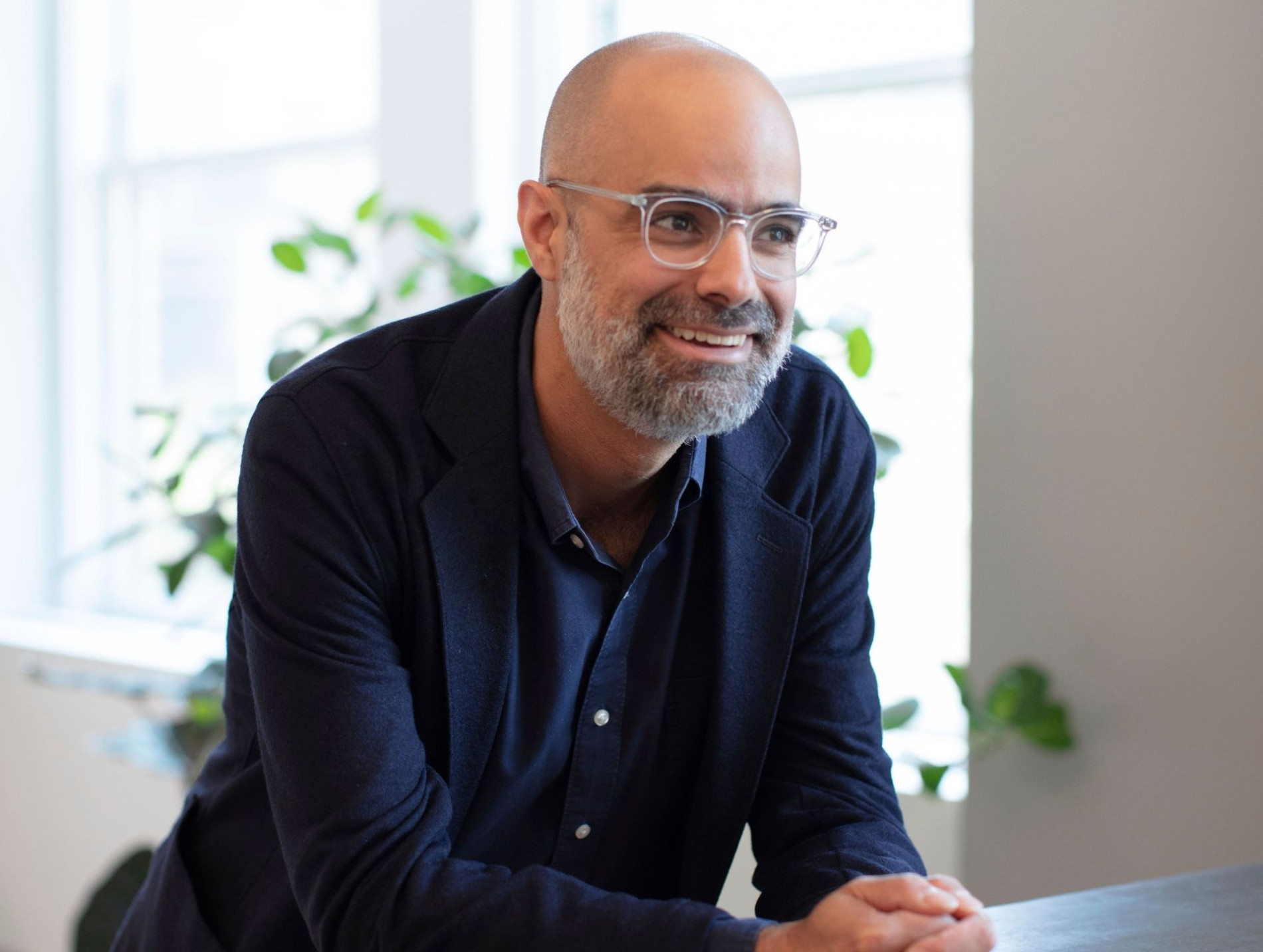
Photo courtesy of KPF.
I don’t think anyone sets out to stay anywhere for 20 years when you’re in your 20s. After Yale, I took a job working in Hong Kong for a local company, building casinos in Macau and big airport projects. Bob Stern was furious because the economy had switched and people were getting jobs at Herzog & de Meuron and Rem without interviews – it was booming. But I just wanted to work on big projects. So I went to the region that was building them. I liked it.
I was working on a casino, the Venetian in Macau, and also detailing a KPF building retrofit in Hong Kong. I realised I didn’t want to be stuck in casinos forever, so I met Paul Katz from KPF and interviewed in New York. He looked at my portfolio and said, “I know your work, you’re hired, we’ll sort out the details.” It was so entrepreneurial for a big firm – unexpected.
My intention was to stay for a year or two. I loved the work, going back and forth between New York and Asia, working on these amazing projects. I never had time to think about leaving. The economy was growing, the firm was growing – it was a fun place to learn. So here I am 20 years later.
On the transition into management…
It’s the hardest part of my career, that moment where you’re expected to lead a team and do the work at the same time. It’s like, how is this even possible? You’re responsible for drawing sets and telling three or four other people what they did wrong while you’re making mistakes too. It was the worst couple of years of my life. I always say to people at KPF, this is the hardest part of your career, and the only way is to get through it as fast as possible – get your head above the water and see the lake. Once you do, you realise things you thought were really complicated aren’t, if you break them down.
Bob Stern also said to me: you’ll never be a successful architect without two things – empathy for your clients and optimism. Empathy because they’re taking huge risks, and optimism because you have to convince them to build it. If you have those two things, you’ll be successful. It’s more complicated than that, of course, but fundamentally, architecture is a service business. It’s no different from a plumbing business: someone calls you up, you do the job as best you can, make sure nothing breaks, and they’re happy. That’s how I think about it. It’s helpful to remind myself that architecture is about servicing a client.
On leadership values…
Ultimately, as an architect, your culture and your firm are the projects you win and the buildings as you build. You can talk about mission and culture, but if you don’t win the work that reinforces your mission, you won’t become the firm you want. I’ve always been focused on making sure the partnership is focused on winning the work that feels part of our core values. So sure, we talk about live-work balance and all that, but ultimately, we want people to come in every day knowing what they’re working on, why they’re working on it.
If everyone sees the partners working hard to achieve that, you don’t have to say that much – it’s in the work. We’re a partnership, not a single name. So the mission has to be broad enough and important enough that everyone can contribute to it.
On running a global practice…
We’ve evolved from a US-focused firm to a global one. About a third of our work is in the Americas, a third in Europe and the Middle East, and a third in Asia. The ambition is to be a global firm with two design centres – New York and London – but partners around the world executing work. We’ve always felt that limiting the locations where design work happens to two or three places allows us to have common conversations about design. The partners have always felt they want to work on projects in Shanghai, Texas, California – we don’t want to stop that. But we have to service our projects and clients, so we keep a global breadth but a tight design conversation. Every Friday, all the partners sit around a table at lunch and share work. You can’t do that if you’re spread out too thin.
We don’t have sector leads or geographic leads. The basic building block is the team. We purpose-build teams for each project, and when the project finishes, the team disbands. So expertise is formed to deliver bespoke solutions. It’s inefficient, and it’s caused our growth to be slower than some competitors, but it holds on to a design culture. That’s where we’ve put our flag. We’re going to make sure that’s successful one way or another.
On design team collaboration…

Hudson Yards. Photo by Connie Zhou, courtesy of KPF.
We’ve always felt – at least it’s always been told to me and I’ve tried to impart it to others – that KPF at its best should be a place where you can become the kind of architect you want to be faster and better inside the firm than in the overall profession. If you hold on to that idea and think of the basic building block of the firm as the team – essentially, we’re 550 people and roughly 100 projects in the office – it’s like 100 small businesses running around. Each team is accountable for design quality, pride, profitability, all of it.
That’s the thing that translates on the promise of being a better architect faster inside the firm – creating that entrepreneurial spark. Where it becomes really interesting is when you’ve got 100 projects globally. Some have two people, some have 70, like Changi Airport, the biggest airport in the world. Hudson Yards at its peak was 70 people; One Vanderbilt, 50 people. Victoria Dockside in Hong Kong, the most complicated project I’ve worked on, had 25 people at its peak. Each of those teams is a small business.
That’s where you learn how to run a small business – starting with four-person teams, then two of them, then a 10-person team, then one day you’re the project director of Changi with five other partners from KPF. You learn to create shared accountability and responsibility. At its best, it’s super exciting because no one’s telling you exactly how to do it – you’re figuring it out together with smart people who are more right than wrong. That’s the incremental growth of a career.
It’s hard work to make sure that it continues to happen as the firm grows – you have to create that much more opportunity. That’s the challenge at the firm: how do you scale up that opportunity? We’re not always perfect; it’s not a perfect place to work – no place is. But there is a genuine commitment from the partners to making sure the opportunities they had from the founders are passed on. That’s what makes it a cool place to work and a nice place to make a career.
Why are you drawn to large projects?

Changi Airport terminal 5 – APM Station. Photo courtesy of Changi Airport Group.
I’ve always been okay with delayed gratification. Our career is so hard today, and I have so much empathy for our younger staff, especially the people who are both doing the work and trying to organise the work. If you’re doing an apartment renovation, you’re in and out in six to twelve months – it doesn’t compete with the instant gratification of the internet or the iPhone, but it’s still a year of your life.
Changi Airport, for example – I was there for the first phone call we got, and my daughter was born that day. We won the project seven years ago when my son was born – I was in the hospital room when we got the call. When we open the project, my kids won’t even be living at home anymore. It’s not just about the building – it’s about nurturing two adults into the world at the same time. You have to be super comfortable taking the small wins every day and being grateful to work in a place where there are 70 other people working harder than you every day on all aspects of the project.
One of the great things about KPF – and I’m sure it’s true in your practice and others – is that if you don’t want to do something, there’s always someone at KPF who does want to do it. There’s someone who loves area schedules, who loves Excel. That’s the fun realisation – there’s no need to do everything yourself. You can become the architect you want to be, drill down into what interests you most, and collaborate with others. That’s the joy of big projects and the reason I love them.
On how the practice has evolved…

KPF’s Rosewood Tower stands at the heart of Victoria Dockside, a mixed-use development redefining Hong Kong’s cultural waterfront. Photo by Virgile Bertrand, courtesy of KPF.
There are the things inside the practice – like going from having the founders very involved to now not so much, which is a sea change in any design culture. When I joined, there was a London office, a New York office, maybe Shanghai. Now we’ve got Singapore, Seoul, San Francisco – so all of that has evolved. And then there’s the macro stuff: the world itself has changed.
When we started Hudson Yards, the first sketches were before the iPhone was invented. Ten years later, Hudson Yards is done. We started working in Covent Garden before the iPhone was invented, before social media changed the world. It’s impossible to be engaged in city building without feeling that enormous pressure of societal change. The first 20 years of my career was all about connecting the world seamlessly, but now we live in a fragmenting world. That’s not about our firm’s culture, but it’s everything to do with our future.
When you start your career, you have no idea these things are going to happen. You can’t even plan for tomorrow. We do business plans and two years in, half the people in the firm have never even stepped foot in the office. That’s a whole new culture. I think architects tend to view themselves as the centre of the universe, but really we’re agents of society, and these changes are being forced on us.
One of the best pieces of advice Jean Gene Cohen gave me was that a lot of architects see their careers as stepping up in a straight line – junior to associate to director to owner – but they don’t realise the practice itself is also evolving. The people on either side of them are going in different directions too. So you have to find a place where your mission syncs with the articulated mission of the firm and the quality of the portfolio that firm is trying to create.
On lecturing at Yale and getting out in the world…
It’s foundational. It’s like your first kindergarten class – figuring out how to be an architect around other architects. You make relationships that last. I’m committed to the school and continuing my involvement. Equally important, though, is getting out into the world – talking to people on planes, reading books that aren’t about architecture, making friends who aren’t architects. That’s just as important as the school, because it broadens your perspective and keeps you engaged in the world around you.
The profession itself can feel insular if you’re only talking to architects about architecture. Of the 40 people I graduated with, very few of us are still architects. Architecture school spawns careers in furniture making, development, all sorts of things. It’s important to stay in touch with those people because you always need advice – you’re constantly finding things you’ve never encountered before.
On why people leave the architecture profession…
The education doesn’t assume everyone will become an architect because the people teaching have been through that themselves. I always gravitated toward professors who built buildings because that’s what interested me. I’m still drawn to architects who build. Everything at KPF is in service of good design that gets built and executed.
On advice for the next generation…
Don’t be in a hurry. You have to get comfortable with delayed gratification. Don’t rush to get a drawing set out or to build too many buildings. The profession is a battle of attrition – don’t set out to be anything other than the best version of the architect you want to be, one building at a time. The profession will move you towards specialisation, and if you feel yourself being moved into something you don’t want, you have to make the change. No one’s going to care more about your career than you.
I’m concerned about the state of the profession – about fees, scope of services, the quality of what we deliver. Architects have a real responsibility to each other and future generations to build a profession that society needs. It’s not a foregone conclusion that architecture exists in 50 years. We have an obligation to make sure it does.
Has your career turned out how you imagined?
If you’d asked 18-year-old me, I’d have said I’d be writing books. If you’d asked 24-year-old me, I’d have said airports. If you’d asked 26-year-old me, I’d have said I’d have my own business. So my career has been roughly adjacent to what I set out to do, but infinitely more satisfying. I’m grateful for the projects I’ve worked on, the people I’ve worked with, the clients I’ve learned from.
Of course, in the trenches, it feels like everything’s going wrong – the wheels are coming off. You’re jealous of other people’s buildings, you’re unhappy with your own. But that’s the state of being an architect: seeing the mistake and knowing you’ll do better next time. Reflecting on it, I’m extremely glad I stuck with it.


Looking to hire top talent
 or advance your career? Let's talk.
or advance your career? Let's talk.
We connect exceptional firms with talented professionals.
Let’s discuss how we can help you achieve your goals. Get in touch with the team today.
Related Posts

Attracting the best talent isn’t just about offering a competitive salary anymore. Architecture and design firms must focus on building a holistic package that includes both financial benefits and work culture, aligning with the values and needs of modern professionals.
Bespoke Careers sponsors the AJ100 Employer of the Year Award, which recognises UK architectural firms with market-leading workplace cultures.
Lucy Cahill, Bespoke Careers London director and AJ100 awards judge, discusses what it takes for a firm to be recognised as Employer of the Year and the ingredients of HTA Design’s success.
The Bartlett In-Person Postgraduate Open Evening
Discover The Bartlett’s renowned postgraduate programmes during this informative evening with faculty and student insights.
